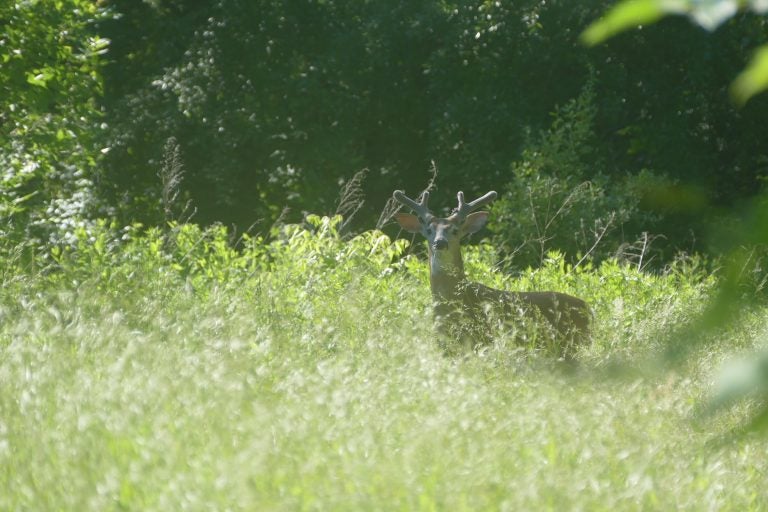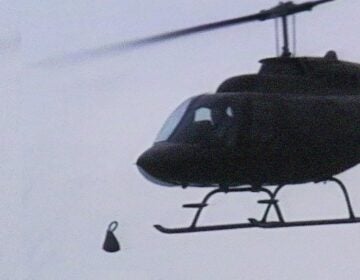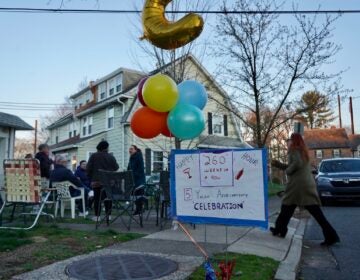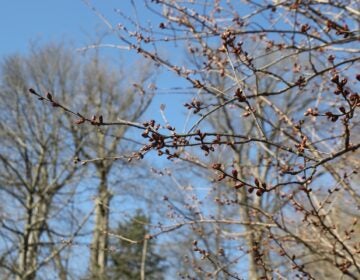Feds OK deer hunting in Heinz Wildlife Refuge, near Philly airport
The bow-and-arrow hunts are planned for 10 days a year. The refuge will be closed to other visitors on those days.

The deer population is too dense for the habitat at the John Heinz National Wildlife Refuge, refuge managers say. U.S. officials have decided the refuge will be one of 30 national wildlife areas opened to hunting and fishing for the first time — or expanded to increase hunting access to public lands. (John Heinz National Wildlife Refuge)
The U.S. Department of Interior announced Friday that deer hunting will be allowed in the John Heinz National Wildlife Refuge at Tinicum in Delaware County, next to Philadelphia International Airport.
Secretary of the Interior Ryan Zinke said the refuge will be one of 30 national wildlife areas across the country opened to hunting and fishing for the first time — or expanded to increase hunting access to public lands.
“American sportsmen and women contribute over a billion dollars a year to fund conservation,” said Zinke in a news release.
Heinz has an abundance of white-tailed deer, according to officials. The ideal number for the amount of habitat is 20 to 25, said Mariana Bergerson, deputy refuge manager, but there are more than 100 deer living in the area.
Until now, the deer were killed by the refuge and U.S. Department of Agriculture’s Wildlife Services, and the meat was donated to Pennsylvania food banks. In 2017, 30 deer were killed; in 2016, 66. Starting next year, the job could be done by the public.
Bergerson said hunting connects people with nature.
“It gets people outside and active, there’s a lot of skill and knowledge that’s needed in order to do a successful hunt,” she said. “But then there’s also the biological side of hunting. There are many more deer on the refuge than there should be, and they heavily browse on a lot of the sapling trees and new vegetation that’s growing.”
An overabundance of deer also spreads disease and damages the forest. An environmental assessment published in March by the John Heinz Refuge said damage caused by deer to forest regeneration is evident.
“The presence of oak and maple saplings within long-term fenced deer exclosures is obvious, while similar vegetation outside of the exclosures is browsed to the ground or is notexistent,” according to the report. “Invasive species of plants, which are often consumed to a lesser extent by deer, have become dominant vegetation types on the refuge. While such impacts currently affect forest understory and the varied animals dependent on this vegetation zone, the longer term implications are that the refuge’s native forested areas could lose the ability to replace themselves through time.”
The hunt would be limited to bow and arrow for 10 days a year starting next year on the 1,000-acre tract that stretches into Philadelphia. Three designated hunting areas, making up about 170 acres, will be kept 50 yards away from buildings and public roadways.
The daily number of hunters won’t exceed 12, and will be assigned by lottery. Preference will be given to first-time youth hunters, disabled hunters and veterans.
According to the refuge, the deer hunt program won’t disturb other animals greatly because the season will coincide with bird migration.
To ensure safety, the refuge will be closed to the public on hunt days. The total cost of running the program is expected to be $9,000 including law enforcement personnel, boundary posting, fliers, public notices, posters, and maps.
The hunting plan went through a public comment period between April and May.
WHYY is your source for fact-based, in-depth journalism and information. As a nonprofit organization, we rely on financial support from readers like you. Please give today.





